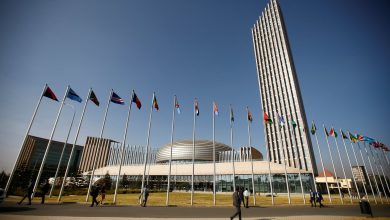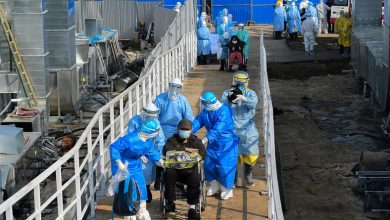
For the record: Inauguration of the 9th Chairman, Engr Christian Ufot of the Nigerian Society of Engineers, Apapa Branch on October 3, 2020
PROTOCOLS!
Ladies and Gentlemen, the topic for this lecture is one that I consider most timely and very relevant in the light of our national challenges today. The country is reeling from all sorts of maladies, the most dangerous and saddening of it all being the descent of our youths into the abyss of moral decadence characterised by drug-smoking, tramadol popping, codeine sipping, 419, Yahoo Yahoo, Yahoo Plus, Area-boyism and all the crimes that follow. It is scary for me to watch the future generations of our beloved nation in self-destruct mode. Let me categorise the youths affected into two. The first group are those who for whatever reasons, were not educated or dropped out of school at an early age. Unfortunately, they also refused to learn any trade or craft. Most of them are now in their late teens, early to late twenties. I am sure that should we take a peep outside the gate of this building we will find them waiting for us to come out to collect hand-outs which will soon vamoose in a hail of smoke of Indian hemp and so on. This category is neither employed nor employable. Some of them who learned one trade or craft have forgotten about it and their routine is to scavenge social function from Thursday till Saturday (Their peak period) looking for dole outs from celebrants and politicians who also use them as cannon folder during political battles.
These young men and women are the role models for the younger ones who see them as their hero for their “Courage”. Thus, the chain of ignominy continues.

The second category consists of some of the 50% of the 500,000 Nigerian youths that graduate from our several tertiary institutions and are left idle because of unemployment. These groups have made the advance fee fraud in all its variants their career. Propped up by all sorts of drugs and bolstered by iniquitous Babalawos and Herbalists (Most of them, fake) that abound, these young boys and girls are almost lost!!! It is these two categories of Nigerians, more than any other that need Industrialisation very fast. It is for them, and their suffering parent that I find today’s topic and lecture very timely, needed and relevant.
Let me say that I have had the priviledge of discussing Industrialisation of different fora both in Nigeria and Abroad. I have also engaged some of our political leaders on different occasions on the need to industrialise the country. I am convinced that virtually everybody here believe in the need to industrialise. I also believe that most of us here have thought about it at one time or the other. Thus, it might be an academic exercise if I continue to speak extensively on the need for industrialisation or the challenges.
So, I have decided to seize this opportunity to minimise my treatise on the theoretical part of Industrialisation but focus more on two issues the first one being “My Clarion call for the Federal Government of Nigeria to declare a state of emergency in the Nigeria’s Industrial sector”. The other issue I will also highlight is to present for bills I have prepared and considered very necessary for us to move Nigeria out of the woods in certain sectors needing urgent intervention.
Having dispersed with the preambles, let us proceed to the lecture itself. I thank you in advance for your patience and attention.

DEFINITIONS
Industrialisation can be defined as the process in which a country or group of people transforms itself into a manufacturer of goods and services. Anyawu, et al (1997) defined it as the totality of relations involving workers, employers and the society as they develop to make up new machines, develop a nations capacity to convert raw materials and other inputs into finished goods for the production or for final consumption. United Nations Committee on Planning saw it as not only a means of producing wider variety of products by the application of modern technology but also as a means of improving the working conditions and standard of living of poverty-stricken people of the world. Characteristics of industrialization include the use of technological innovation to solve problems as opposed to superstition or dependency upon conditions outside human control such as the weather, as well as more efficient division of labour and economic growth.
Industrialisation is also a process of change (both social and economic) in which a human group is transformed from a society that is pre-industrial into a society that is industrial. It can therefore be summarized as:
The process by which traditionally non industrial sectors (such as agriculture, education, health) of an economy become increasingly similar to the manufacturing sector of the economy. Sustained economic development based on factory production, division of labour, concentration of industries and population in certain geographical areas, and urbanization.
The role of industrialisation in economic development cannot be overemphasized. Nations seek to achieve rapid industrial development because of its potential benefits. UNIDO (1973) observed that industrialisation could stimulate economic development which would generate a surplus that in turn would lead to faster growth in output and diversification of that output which could lead to structural change conducive to sustained income and economic growth.
HISTORY OF INDUSTRIALISATION IN NIGERIA
Daibi W. Dagogo (2014) divided the Industrial Activities of Nigeria into 5 phases namely Pre-Independence Era (1943-1959), Post-Colonial Era (1960-1969), Oil Boom Era (1970-1979), the decade of the 1980, 1990 and beyond.
The Pre-Independence Era (1943 – 1959) – In this era, industrialisation started due to the desire of the Colonial government of Britain to obtain industrial raw materials from the country. Thus, most of the industries set up then basically carried out the initial processing of raw materials with the objective of removing waste matter, improving the quality, and converting the produce into a form that is easier to export (Onyemelukwe 1983). Thus, the mills such as Palm oil mill, groundnut crushing mills, oil seed mills, power-driven mills, and the likes became the pioneer factories, followed by finishing operation factories such as printing, publishing, baking, furniture works, etc. This was followed by light consumer industries such as a food canning, beer and soft drinks etc. Which started with the expansion of European trading firms into manufacturing
Immediate Post-Colonial Era (1960 – 1969) – The post-independence administration of Nigeria sought to transform the country to a modern industrial economy with high priority on rapid industrialisation as enshrined in the objectives of the first National Development Plan (1962 – 1968). This led to the adoption of import substitution strategy which entailed the local manufacture of goods that were previously imported. The key objectives were to lessen over-dependence on foreign goods, and to save foreign exchange by producing those goods locally. The policy was protective of the local industries with low tariff on imported raw materials and goods, tax concessions and high tariff on imported goods. This paid off and the number of medium and largescale industrial plants in Nigeria increased from 50 plants at independence to 380 by 1966. Similarly, manufacturing as share of GDP rose from 4.2% at independence to 6.1% in 1964.

Unfortunately, the first National Development Plan did not achieve much partly because the objectives were not strictly implemented and also because of gross inefficiency, supply bottlenecks, limited discipline as well as lower quality compared with imported goods. Also, the Civil war between 1967 and 1970 further undermined the plan.
Oil Boom Era – On the conclusion of the civil war in 1970, the policy of government was driven by Reconciliation Rehabilitation and Reconstruction. Thus the second National Development Plan (1970 – 1974) was to promote even development and fair distribution of industries in all parts of the country, to ensure rapid expansion and diversification of the industrial sector, to increase incomes realized from manufacturing activities, create more employment opportunities, promote the establishment of heavy industries in strategic sectors that can earn foreign exchange, continue the programme of import-substitution, initiate indigenous manpower development schemes in the industrial sector and to raise the proposition of indigenous ownership of Industrial Investments (Federal Ministry of Information, 1970).
Again, these laudable objectives were undermined by lack of proper economic planning, transparency and accountability despite the availability of sufficient revenue from its oil boom. Again, the promotion of equity in the distribution of the industries over economic considerations had its short-comings. Heavy industries such as oil refineries, petrochemicals, liquefied natural gas, machine tools and so on characterized this era. The poor performance of these industries that continue to bleed cash, the preference of foreign goods to local ones, and the sudden crash in oil prices has left the federal government with accumulated debt obligations to discharge (Ikpeze et al, 2004). The Nigerian Enterprises Promotion Decree of 1972 which reserved certain categories of Industrial activity mostly services and manufacturing for Nigerians (Ikpeze et al, 2004). Towards the end of 1979, the then prevailing polices of import licensing and exchange rate controls necessitated by the high taste for imported goods and services, the huge deployment of Forex for the industries as well as dwindling oil revenue resulted in acute shortage of Industrial inputs with adverse consequences on industrial production and capacity utilisation. This led to the introduction of import Licenses. The sourcing and scale of import licenses became big business for many rent seekers (Iwuagwu, 2011).
The decade of the 1980s
The decade of the 1980s regrettably started with the challenges of dwindling oil revenue which led the government to promulgate the Economic Stabilization Act in 1982. This prepared the way for the introduction of Structural Adjustment Programme (SAP) in 1986 (Iwuagwu, 2011), SAP was introduced amid a gloomy background of mounting external debt, unhealthy investment and the failure of the regime of stringent trade and exchange controls, which was pursued in the previous decade (FRN, 1986) . Privatization and Liberalization of the aspects of the economy was introduced, import license regime was abolished while industries were encouraged to integrate backwards in the sourcing of their raw materials (Gagogo 2012).

In 1988, the Industrial Policy was introduced which was focused on making the industrial sector the driver of the economy. Unfortunately, the inherent conflicts in SAP and liberalization as well as the advent of power supply problems became the bane of SME growth and signaled the death most of the high-power consuming industries.
1990 and beyond
Since 1990, all form of interventions, rolling plans, policies and master plans have been introduced to support industrial growth with the little result. Significantly the Bank of Industry was set up to lend to industries. Nigeria Agricultural Cooperative and Rural Development Bank (NACRDB) was set up to provide medium and long-term funds for Agriculture and agro-allied industries. The Small and Medium Enterprises Equity Investment Scheme (SMEEIS) which was meant to provide equity finance for industrialisation was also introduced. All these efforts failed in the midst of poor infrastructure like power, telecommunications, roads and even water.
High corruption, poor legal framework, high cost of capital, poor macroeconomic environment, insecurity, multiple taxation, e.t.c all combine to bring the contribution of industry to National GDP to just below 4 percent. A lot of industries closed down while some migrated to neighboring countries.
SELECTED GLOBAL CASE STUDIES
MALAYSIA
In the forty years following independence, Malaysia adopted two economic policies and two industrialization strategies that were instrumental in the country’s journey towards industrialization. The two economic policies were the New Economic Policy and the National Development Policy, and the two industrialization strategies were the Import Substitution Industrialization (ISI) strategy and the Export-Oriented Industrialization (EOI) strategy. The key to the success of the ISI and EOI strategies was the ‘Malaysia Incorporated’ policy, introduced in 1983, which emphasized public-private sector relationships. The resulting partnership between the public and private sectors helped to reengineer the business environment in the 1980s and 1990s. With the partnership in 126 places, a strategy for upgrading and stirring the country’s economy to new heights was developed. The strategy is based on Vision 2020 (promulgated in 1990), which promotes knowledge-based industries in order to add value to products with export potential. The Malaysian government has given high priority to export-oriented firms that are more knowledge-intensive than production-intensive, so as to transform the country’s manufacturing in the direction of high-tech and knowledge-based industries.

INDONESIA
Indonesia, the fourth most populous nation in the world and the largest economy in South East Asia, has an unusual economic and industrial history, with its post-1945 independent history dominated by three major episodes. Through to the mid-1960s, it had barely commenced the process of modern industrialization. It lagged behind its Asian neighbors, experiencing neither the state-orchestrated heavy industrialization of China and India, nor the export-oriented growth, then getting under way in the Asian newly industrialized economies.2 Its modern industrial sector, such as it was, was dominated by a few large state-owned enterprises, which in most cases had been established by Dutch commercial interests before the Pacific War, and subsequently taken over by the state as part of the 1957–58 nationalizations. Then, in a sudden reversal of fortunes, the country began to experience very rapid industrialization from the late 1960s, with the manufacturing sector growing at more than 10 per cent per annum for most of the subsequent three decades. Initially this growth was import-substituting in nature, but from the mid-1980s a successful transition to export-orientated industrialization was engineered. That rapid growth was brought to an abrupt halt in 1997–98 with the Asian financial crisis, which resulted in a peak-to-trough growth collapse of more than 20 percentage points. Subsequently, growth recovered, but the effects on the nature and drivers of industrial growth appear to be profound.
CHINA.
China’s industrial revolution, which started 35 years ago, is perhaps one of the most important economic and geopolitical phenomena since the original Industrial Revolution 250 years ago.4 How could a nation with 1.4 billion people transform itself relatively suddenly from a vastly impoverished agricultural land into a formidable industrial powerhouse when so many tiny nations have been unable to do so despite their more favorable social-economic condition.
The short answer is that China has rediscovered the “secret recipe” of the Industrial Revolution which is political institution and political stability. What is happening in China is not its first attempt at industrialization but the fourth over the past 120 years.5
China’s fourth attempt started in 1978 under leader Deng Xiaoping. The country refused to take advice from Western economists and instead took a very humble, gradualist, experimental approach with its economic reforms. The keys to this approach have been to:
*maintain political stability at all costs; focus on the grassroots, bottom-up,reforms (starting in agriculture instead of in the financial sector);promote rural industries despite their primitive technologies; use manufactured goods (instead of only natural resources) to exchange for machinery; provide enormous government support for infrastructure buildup; follow a dual-track system of government/private ownership instead of wholesale privatization; and move up the industrial ladder, from light to heavy industries, from labor- to capital intensive production, from manufacturing to financial capitalism, and from a high-saving state to a consumerist welfare state.
China’s fourth attempt mimics the historical sequence of the British Industrial Revolution, despite dramatic differences in political institutions. (After all, China is still an authoritarian state.)

SINGAPORE
For over 100 years, Singapore was under British control. But when the British failed to protect the colony from the Japanese during World War II, it sparked a strong anti-colonial and nationalist sentiment that subsequently led to Singapore’s independence.7 Hence, Singapore gained formal independence on August 9, 1965, with Yusof bin Ishak serving as its first president and the highly influential Lee Kuan Yew as its prime minister.
After independence, Singapore continued to experience problems. Much of the city-state’s three million people were unemployed. More than two-thirds of its population were living in slums and squatter settlements on the city’s fringe. The territory was sandwiched between two large and unfriendly states in Malaysia and Indonesia. Singapore lacked natural resources, sanitation, proper infrastructure, and adequate water supply. In order to stimulate development, Lee sought international assistance, but his pleas went unanswered, leaving Singapore to fend for itself.8
The most feasible solution to Singapore’s economic and unemployment woes was to embark on a comprehensive program of industrialization, with a focus on labor-intensive industries. Unfortunately, Singapore had no industrial tradition. The majority of its working population was in trade and services. Therefore, they had no expertise or easily adaptable skills. Moreover, without a hinterland and neighbors who would trade with it, Singapore was forced to look for opportunities well beyond its borders to spearhead its industrial development.
Pressured to find work for their people, the leaders of Singapore began to experiment with globalization. Influenced by Israel’s ability to leap over its Arab neighbors (who boycotted Israel) and trade with Europe and America, Lee and his colleagues knew they had to connect with the developed world and convince multinational corporations to manufacture in Singapore.9
In order to attract investors, Singapore had to create an environment that was safe, corruption-free, and low in taxation. To make this feasible, the citizens of the country had to suspend a large measure of their freedom in place of a more autocratic government. Anyone caught conducting narcotic trade or intensive corruption would be met with the death penalty. Lee’s People Action Party (PAP) repressed all independent labor unions and consolidated what remained into a single umbrella group called the National Trade Union Congress (NTUC), which the party directly controlled. Individuals who threatened national, political, or corporate unity were quickly jailed without much due process. The country’s draconian, but business-friendly laws became very appealing to international investors. In contrast to its neighbors, where political and economic climates were unpredictable, Singapore was very stable. Moreover, with its advantageous location and established port system, Singapore was an ideal place to manufacture goods.
By 1972, just seven years after independence, one-quarter of Singapore’s manufacturing firms were either foreign-owned or joint-venture companies, and both the United States and Japan were major investors. As a result of Singapore’s steady climate, favorable investment conditions and the rapid expansion of the world economy from 1965 to 1972, the country’s Gross Domestic Product (GDP) experienced annual double-digit growth.
As foreign investment money poured in, Singapore began focusing on developing its human resources in addition to its infrastructure. The country set up many technical schools and paid international corporations to train their unskilled workers in information technology, petrochemicals, and electronics. For those who could not get industrial jobs, the government enrolled them in labor-intensive un-tradable services, such as tourism and transportation. The strategy of having multinationals educate their workforce paid great dividends for the country. In the 1970s, Singapore was primarily exporting textiles, garments, and basic electronics. By the 1990s, they were engaging in wafer fabrication, logistics, biotech research, pharmaceuticals, integrated circuit design, and aerospace engineering.

SOUTH KOREA
At its creation in 1948, South Korea ranked as one of the world’s poorest states. Twelve years later, in 1960, it remained so with a per capita income about the same as Haiti. A number of factors contributed to that poverty. South Korea was predominantly an agricultural society, but it did undergo some industrialization during the Japanese colonial rule, from 1910 to 1945, mostly in the northern provinces. The Japanese colonial administration created a professional civil service and an efficient, development-oriented state that worked closely with private business and banks to achieve economic targets. But it was a predatory, exploitative development designed to benefit Japan rather than Korea.
Hence, in the 1950s South Korea had an underdeveloped, agrarian economy that depended heavily on foreign aid. The military leadership that emerged in the early 1960s and led the country for a quarter century may have been autocratic and, at times, repressive, but its pragmatic and flexible commitment to economic development resulted in what became known as the “miracle on the Han River.” During the next three decades, the South Korean economy grew at an average annual rate of nearly 9 percent, and per capita income increased more than a hundredfold. South Korea was transformed into an industrial powerhouse with a highly skilled labor force. In the late 20th century, however, economic growth slowed, and in 1997 South Korea was forced to accept a $57 billion bailout from the International Monetary Fund (IMF)—then the largest such rescue in IMF history. Nevertheless, its economy enjoyed a recovery in subsequent years, and the country entered the 21st century on a relatively firm economic footing.
UNITED STATES OF AMERICA (USA)
Economic, social, and cultural history cannot easily be separated. The creation of the “factory system” in the United States was the outcome of interaction between several characteristically American forces: faith in the future, a generally welcoming attitude toward immigrants, an abundance of resources linked to a shortage of labor, and a hospitable view of innovation.13
Thus, after the Civil War, the United States rapidly transformed into an industrial, urbanized nation. Technological innovation, economic growth, development of large-scale agriculture, and the expansion of the federal government characterized the era, as did the social tensions brought about by immigration, financial turmoil, federal Indian policy, and increasing demands for rights by workers, women, and minorities. This group of objects highlights innovation and industrialization in the late 1800s, and the benefits as well as detriments of becoming an economic and industrial power.14

Many factors combined to produce this burst of industrial activity. The exploitation of United States resources, including mines and lumber, stimulated a demand for improved transportation, while the gold and silver mines provided new sources of capital for investment in the East. The construction of railroads, especially in the West and South, with the resulting demand for steel rails, was a major force in the expansion of the steel industry and increased the railroad mileage in the United States from less than 93,262 miles (150,151 kilometres) in 1880 to about 190,000 miles (310,000 kilometres) in 1900. Technological advances, including the utilization of the Bessemer and open-hearth processes in the manufacture of steel, resulted in improved products and lower production costs. A series of major inventions, including the telephone, typewriter, linotype, phonograph, electric light, cash register, air brake, refrigerator car, and the automobile, became the bases for new industries, while many of them revolutionized the conduct of business. The use of petroleum products in industry as well as for domestic heating and lighting became the cornerstone of the most powerful of the new industries of the period, while the trolley car, the increased use of gas and electric power, and the telephone led to the establishment of important public utilities that were natural monopolies and could operate only on the basis of franchises granted by state or municipal governments. The widespread employment of the corporate form of business organization offered new opportunities for large-scale financing of business enterprise and attracted new capital, much of it furnished by European investors.
CONCLUSION OF GLOBAL CASE STUDIES
From the fore mentioned industrial revolution histories, the connections that abridge these nations are deliberate reforms, plan and re-planning of political and economic agendas, corruption free, stern governance and industrial friendly policies.
It is important to further state that none of the fore discussed nations got to their developed state on a platter of gold. Structures were laid, visions were nurtured and seen through, deliberate hardship were meted for greater course, yesterday’s comfort were sacrificed for today’s glory to manifest. The Prices of industrialization were paid and today, obviously, it is paying off for these set of nations.
MISSING FACTORS OF SUCCESS
According to Daibi W. Dagogo (2012), the following factors of success, are missing in the Nigerian environment in comparison with Europe, USA and Asia which had successfully adopted most of our policies. They are: Attractive Fiscal and Legal framework, Stock option plans to attract and retain talents, Pool of Management Experts and Business Strategists that can support Entrepreneur in running of venture capital backed companies.
Linkage with Research Institutions and Investors.
Second chance to Entrepreneur whose businesses went bankrupt. Corporate venturing.
Research and Development to promote high technology industries without downplaying the strategic importance of the low-technology industries in the economy.
Other missing factors of success include: High cost of Finance. Lack of Appropriate Infrastructure such as Road, Rail lines, Power Communication Facility. Difficulty of doing Business. Lack of Sanctity of Contract. Corruption. Poor Work Ethnics.Inadequacy of the right skills required for Industrialisation.
BENEFITS OF INDUSTRIALISATION FOR ENGINEERS AND OTHERS
Employment generation directly through the construction of industries. Employment generation indirectly through auxiliary services to be provided by others during the construction activities such as supply of aggregates and related activities.Direct employment by the Industries. Increased business opportunities for auxiliary services such as supply of raw materials, distribution of finished products, provision of services such as consultancy, training, repairs, banking etc.
Increase in value of land and rental values of accommodation. Transfer of Technology to the Indigenes.Increased disposable income generally.Increased utilisation of land. Introduction of better farming techniques and improved funding for farmers. Increased tax revenue for the government. Improved infrastructure by government to encourage the industrialists.
Benefits accruing from the discharge of corporate social responsibility by the different industries. Reduction of criminal activities through gainful employment and better security which will be a natural concern of the industries. Greater, better and more prosperous NIGERIA AND NIGERIANS
MODELS
There are different models for Industrialisation in a particular community. Some of these are as below:
PRIVATE: Private can be solely owned or in a partnership.
PUBLIC
This is when one of the Federal, State or Local Governments decides to set up industries for strategic reasons. The Obafemi Awolowo Administration of the old western region utilised this and this was how the Oodua Group was born. However, public ownership of industries is becoming unpopular as the governments are now committed to only providing an enabling environment for businesses to thrive.
PUBLIC -PRIVATE PARTNERSHIP
This is a model that allows partnership between private Investors and the government. In most cases, the governments’ equity is in form of land and infrastructures only. This model sometimes makes access to funding by purpose set-up Industrial funding organisations such as the Bank of Industry easier.

TOWNSHIP AND VILLAGE ENTERPRISES
This model was made popular in China in which entire communities put all their resources together to create industries. Township and Village Enterprises are either collectively established by, or initially based on and closely associated with rural communities such as townships and villages. For example, all the people of Badagry in Lagos State can come together to promote an industry where the whole country will be stakeholders. In 1995, Township and Village Enterprises produced nearly 30% of China’s gross domestic product (GDP). In the same year, Industrial Township and Village Enterprises produced about half of the total industrial value added, profit and output.
In 1990, China had 1.4million Township and Village Enterprises. By 1996 it had grown to 23.4million Township and Village Enterprises with 135 million employees.
HYBRID
Hybrid are a combination of various investors who could be the government, core partners, major investors from the country and others. A typical example of an hybrid is as follows:
State Government = 5%. Local Government = 5%. Core Technical Investor = 40%. Core Financial Investor (Indigenes) = 30%. General Populace (Indigenes) = 10%
However, a target for exit must be put in place ab-initio such that after a certain number of years, the local and state government should disinvest and use the recovered investment as seed money for another industrial venture. I recommend this for Nigeria where the barrier against takeoff of industries is very high.
CLUSTER CONCEPTS
Cluster Concept was introduced with a view to create a community of business located together which in which members will seek enhanced environmental and corporate performance towards effective global competitiveness. It would also enable the government to concentrate on infrastructures and other common facilities for business operators in identified locations (FMC & I, 2007). Cluster Concept was designed to operate on the following basis: Free Trade Zones, Industrial Parks, Industrial Clusters, Enterprises Zones and Incubators. The success of these Clusters are still been evaluated but obviously, the rate of success is far below the set targets.
FUNDING: Foreign
There are various funds available outside Nigeria for Investment in Industries in places like Nigeria. However, to access this fund, a strategy has to be put in place with well enunciated industrial policies and concerted action by all stakeholders. Some of the organisations with such funds are:
IFU – Industrialisation Fund for Developing Countries, UNDP – United Nations Development Programme, IFC – International Finance Corporation, World Bank, IBRD – International Bank for Reconstruction and Development, ADB – African Development Bank
There are also several foreign private investors who are eager to take advantage of the cheaper labour and huge market that Nigeria generally offers and all these can be attracted using a policy document that clearly enunciates the incentives, opportunities and objectives with a good legal framework.






